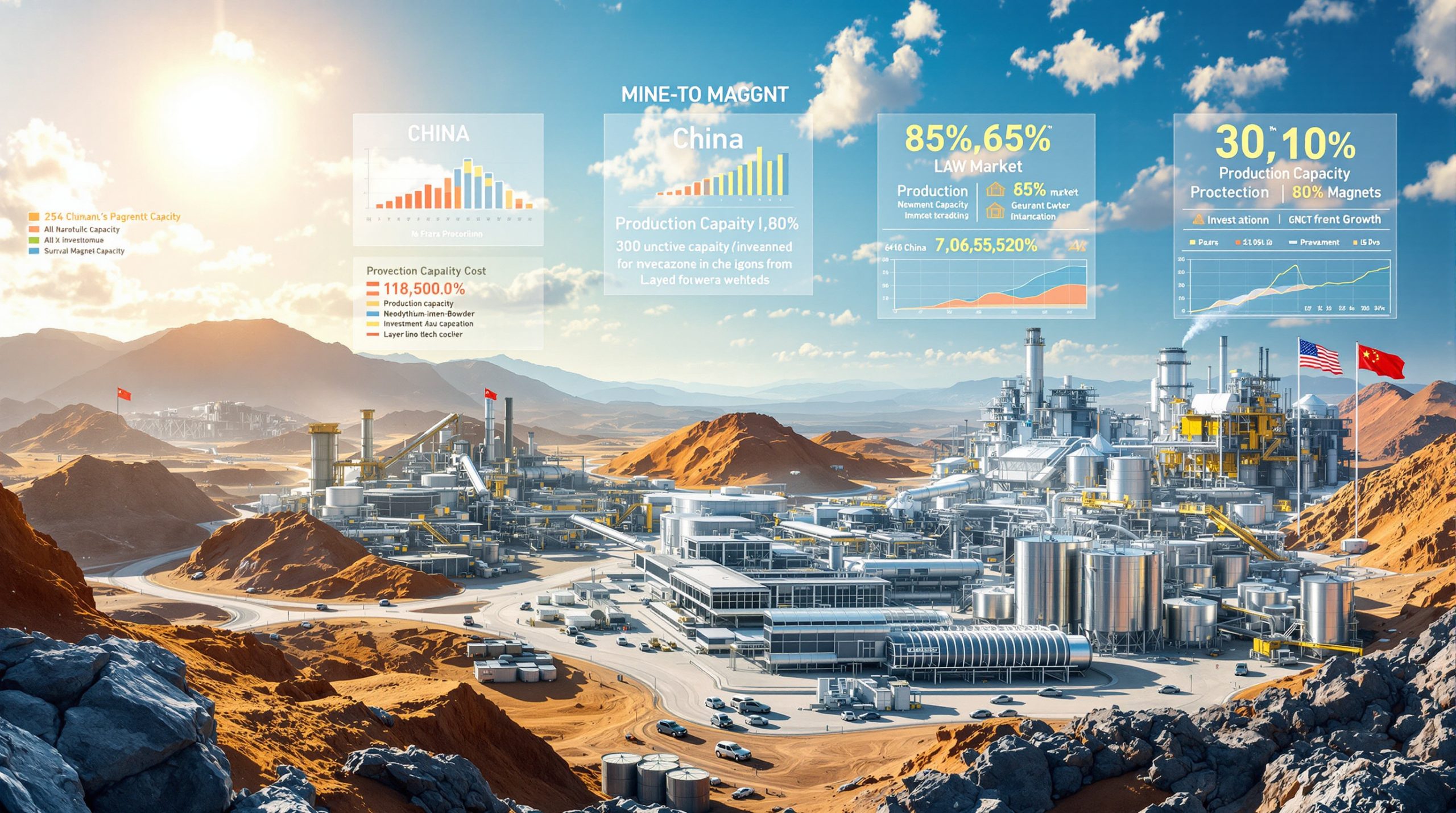What Is the Global Metallurgical Coke Market Outlook for 2025?
The metallurgical coke market is undergoing a profound transformation in 2025, driven by multiple forces reshaping traditional supply-demand dynamics. Current projections indicate significant volatility as market participants navigate China's domestic steel production slowdown, India's protectionist trade measures, and the European Union's progressive carbon regulation implementation.
Industry analysts project global metallurgical coke consumption to experience regionalized shifts rather than uniform growth. While major economies like China face headwinds, emerging infrastructure development in Southeast Asia presents potential bright spots in an otherwise challenging market environment.
The market outlook reflects a complex interplay between industrial decarbonisation in mining efforts, regional trade policies, and infrastructure development cycles. Understanding these intersecting trends is essential for producers, consumers, and investors navigating this critical industrial commodity sector.
How Is China's Domestic Slowdown Affecting the Global Met Coke Market?
Declining Steel Production Impacts Coke Demand
China's dominance in global steel production—accounting for over 50% of worldwide crude steel output in 2024—makes its domestic economic conditions a primary driver of global metallurgical coke demand. The country is experiencing a notable downturn in steel consumption, creating ripple effects throughout international supply chains.
The real estate sector, traditionally a major steel consumer, contributed to a significant 7% year-over-year decline in steel consumption during Q4 2024. This downturn has directly translated to reduced coke requirements, with pig iron production forecasts pointing to further contraction.
Industry consensus indicates Chinese crude steel production will continue declining throughout 2025, though experts debate the precise magnitude of the reduction. This uncertainty creates market volatility as suppliers and consumers attempt to position themselves appropriately.
Key Production Metrics and Forecasts
- Pig iron production in China is projected to decrease by approximately 1.5% or more in 2025
- Energy consumption policies targeting reduced coal dependency are directly impacting coke-intensive blast furnace operations
- Real estate market cooling has significantly dampened construction-related steel demand
- Shanxi province, China's coke production heartland, has implemented output adjustments affecting global pricing
When compared to the robust growth period of 2015-2020, the current production trends represent a structural shift rather than a cyclical downturn. This fundamental change in China's steel production trajectory has profound implications for metallurgical coke suppliers globally.
Export Challenges for Chinese Producers
Chinese metallurgical coke exporters face an increasingly challenging international environment:
- Tightening environmental regulations in destination markets are limiting access for carbon-intensive Chinese coke
- U.S. reciprocal tariffs have created significant trade barriers in a previously important market
- Steel product exports from China are expected to decline substantially in 2025
- Domestic oversupply concerns are increasing as export opportunities diminish
"The combined effect of tightening global environmental regulations and emerging trade barriers is significantly challenging export growth potential for Chinese coke producers," noted an international trading source at a recent industry conference.
These export challenges are intensifying competition within China's domestic market, further pressuring producer margins and potentially accelerating industry consolidation among less efficient operations.
What Trade Restrictions Are Reshaping Global Met Coke Flows?
India's Protectionist Measures Impact Global Suppliers
India has implemented substantial restrictions on metallurgical coke imports, creating significant disruption in traditional trade flows. These measures are explicitly designed to shield domestic producers from international competition while supporting India's self-sufficiency goals.
The restrictions include:
- Import cap of 1.42 million tonnes for the first half of 2025
- Quarterly import allowance limited to 713,583 tonnes
- Anti-dumping investigation launched in April 2025 targeting six major exporting countries:
- Australia
- China
- Colombia
- Indonesia
- Japan
- Russia
The anti-dumping investigation is proceeding under WTO Article 5 guidelines, requiring exporters to submit comprehensive cost data within 60 days of notification. This administrative burden creates additional uncertainty for suppliers already managing reduced quota volumes.
Potential Consequences of India's Trade Actions
The impact of India's import restrictions extends far beyond its borders, creating particular challenges for countries heavily dependent on the Indian market. Indonesia, which directed 48% of its 5.6 million tonnes of metallurgical coke exports to India in 2024, faces significant exposure to these policy changes.
"Anti-dumping duties, if implemented following the investigation, could fundamentally reshape ASEAN trade dynamics," warned a market analyst at a recent industry conference. "Producers will need to rapidly identify alternative markets or risk severe overcapacity issues."
Other exporting nations are experiencing varied impacts:
- Colombia's coke exports to India surged 40% in the months preceding the restrictions
- Vietnam has implemented a 15% tariff reduction for non-Indian imports to diversify supply sources
- Australian producers face potential double exposure through both direct exports and indirect shipments via third countries
These trade restrictions are creating both challenges and opportunities as the global metallurgical coke market undergoes a substantial reconfiguration of established trade patterns.
How Will Carbon Regulations Impact Met Coke Trade in 2025?
EU's Carbon Border Adjustment Mechanism (CBAM)
The European Union's Carbon Border Adjustment Mechanism, while officially scheduled for full implementation in 2026, is already influencing market dynamics throughout 2025 as companies prepare for compliance:
- Additional charges of $10-15 per tonne will be applied to high-emission goods, including metallurgical coke
- 23% of China's coke export volume was historically directed to EU markets now subject to CBAM
- Price competitiveness erosion is particularly acute for coal-based producers with carbon-intensive operations
- Reporting requirements are creating administrative compliance costs even before financial obligations begin
The carbon intensity differential between production methods is substantial, with Chinese coking processes typically emitting approximately 2.1 tonnes CO₂ per tonne of coke produced, compared to 1.4 tonnes in EU shaft furnaces. This gap translates directly into competitive disadvantage under the new carbon pricing regime.
"CBAM effectively erodes price competitiveness for traditional coal-based producers, creating a structural shift in favor of lower-emission operations," explained an EU policy specialist at a recent industry briefing.
Decarbonization Pressures Across the Industry
The global steel industry's push toward greener production methods is creating both challenges and opportunities for metallurgical coke producers:
- Traditional coke producers face increasing cost pressures and market access restrictions
- Investment in cleaner production technologies is becoming essential for long-term viability
- Producers with lower carbon footprints are gaining significant competitive advantages
- CBAM's projected $8 billion annual cost for Asian exporters by 2030 is driving strategic reassessment
Several major steel producers are actively investing in coke reduction technologies:
- ThyssenKrupp's €2 billion hydrogen-based direct reduction pilot (launched 2024) aims to cut coke use by 50%
- ArcelorMittal's carbon capture retrofit in Ghent (2025) targets emissions reduction while maintaining blast furnace operations
- Multiple Asian producers are exploring biomass substitution to reduce fossil carbon intensity
These investments signal a fundamental transition in the metallurgical coke market from quantity-focused competition to carbon-efficiency as a primary competitive factor.
Where Are the Emerging Opportunities in the Met Coke Market?
Southeast Asia's Infrastructure Development Creates Demand
Despite global market headwinds, Southeast Asian countries are demonstrating promising demand growth potential due to ambitious infrastructure development programs:
- Indonesia's capital relocation to Nusantara will require approximately 4.2 million tonnes of steel by 2030
- Vietnam's North-South High-Speed Railway (1,545 km) is scheduled to begin construction in 2027, consuming an estimated 18 million tonnes of steel through 2035
- Thailand's Eastern Economic Corridor ($45 billion development) is targeting 12% annual industrial growth
- Malaysian ISKANDAR region is developing 14 new steel plants between 2024-2025
These infrastructure megaprojects represent substantial new demand centers for metallurgical coke in a region previously considered secondary to traditional markets like China and India.
The projected growth creates opportunities for suppliers who can establish regional presence and build relationships with emerging steel producers. Logistics improvements, including port expansions in Surabaya, Indonesia, are facilitating increased metallurgical coke trade volumes within the region.
Indonesia's Dual Role as Producer and Consumer
Indonesia presents a particularly nuanced picture in the evolving metallurgical coke landscape:
- Total operational coke capacity reached approximately 11.85 million tonnes in 2024
- Exported approximately 5.60 million tonnes of metallurgical coke in 2024
- Export distribution highlights vulnerability to Indian trade restrictions:
- 48% of exports went to India
- Vietnam and Malaysia together accounted for only 33%
- Domestic consumption is growing alongside industrial development and infrastructure projects
The country's simultaneous production expansion and growing domestic demand create a complex internal market dynamic. While Indonesia remains a significant net exporter, the growth of domestic steel production provides partial insulation from international market volatility.
Employment impacts are substantial, with industry estimates suggesting 120,000 new metallurgy-related jobs will be created across ASEAN countries by 2026, supporting broader economic development goals throughout the region.
Can Southeast Asian Demand Offset Global Market Pressures?
Market Sentiment Remains Cautiously Optimistic
Industry participants express mixed perspectives on Southeast Asia's ability to balance global market challenges:
"While Southeast Asia does have strong demand growth potential, it is still unlikely to fully absorb the increased coke production capacity," observed a prominent market trader at a recent industry forum. "Infrastructure demand may not completely counter the impact of India's trade barriers."
This cautious sentiment reflects concerns about production capacity growing faster than consumption:
- Regional coke capacity expansion includes Indonesia (+3.2 million tonnes) and Vietnam (+1.1 million tonnes) in 2024
- ASEAN's metallurgical coke demand is growing at approximately 4.8% CAGR
- Production growth is outpacing demand at approximately 6.1% CAGR
- Philippines' coke imports rose 22% in 2024 amid domestic production delays
The imbalance between capacity growth and demand expansion creates potential oversupply risk, particularly if Indian import restrictions remain in place long-term.
Supply-Demand Balance Shifting
The metallurgical coke market is experiencing a fundamental realignment across multiple dimensions:
- Traditional importing regions implementing protectionist measures
- Production capacity expanding in emerging markets
- Decarbonization initiatives creating cost differentials between producers
- Infrastructure development providing selective growth opportunities
- Myanmar's proposed coke import ban (potentially implementing in Q3 2025) could further disrupt regional flows
These shifts are creating a more fragmented global market with increasing regionalization of trade flows. The industry's historical pattern of relatively predictable trade relationships is giving way to more dynamic and potentially volatile arrangements.
Risk analysis using 2025-2030 production and demand models suggests potential overcapacity scenarios unless capacity expansion decelerates or demand accelerates beyond current projections.
What Are the Key Metrics for Met Coke Market Assessment?
Production Capacity vs. Actual Demand
Understanding the relationship between installed capacity and actual consumption provides critical insights for market analysis:
| Region | 2024 Production Capacity | 2024 Consumption | 2025 Forecast Change |
|---|---|---|---|
| China | 471 million tonnes | 432 million tonnes | -1.5% or greater |
| India | 72 million tonnes | 68 million tonnes | Reduced imports |
| Indonesia | 11.85 million tonnes | 6.25 million tonnes | Moderate increase |
| Southeast Asia (ex-Indonesia) | 18.7 million tonnes | 17.4 million tonnes | +4.8% |
These figures highlight the potential for structural oversupply, particularly in regions expanding capacity while facing export challenges. The global market's ability to absorb excess production is increasingly constrained by trade barriers and regional self-sufficiency initiatives.
Trade Flow Disruptions
The redirection of metallurgical coke exports due to trade barriers is creating new market dynamics and potential price volatility:
- Indonesian exporters seeking alternatives to the Indian market are increasing shipments to Vietnam and Malaysia
- Chinese producers facing increased domestic competition are exploring new export destinations
- Price spreads between regions are widening as logistics costs influence redirection decisions
- Quality differentials are becoming more significant as buyers evaluate non-traditional suppliers
These trade flow adjustments typically involve transition costs and efficiency losses as established supply chains are disrupted and reformed. The resulting friction can create both temporary price anomalies and longer-term structural changes in regional price relationships.
FAQs About the Global Met Coke Market in 2025
What is driving the volatility in the global metallurgical coke market?
The market volatility stems from a combination of declining demand in China, increasing trade protectionism (particularly in India), carbon regulation implementation in Europe, and shifting supply-demand dynamics in Southeast Asia. These factors are creating significant uncertainty for producers and consumers alike.
China's steel industry slowdown represents structural rather than cyclical change, while India's import restrictions reflect strategic industrial policy rather than temporary measures. The EU's carbon regulations introduce permanent cost structure changes that advantage lower-emission producers.
How are decarbonization efforts affecting metallurgical coke producers?
Decarbonization initiatives, particularly the EU's CBAM, are adding cost pressures to traditional coke producers while creating competitive advantages for those with cleaner production methods. The industry is increasingly investing in technologies to reduce carbon emissions throughout the production process.
The differential between high-carbon and low-carbon production methods can reach $10-15 per tonne under CBAM, fundamentally altering competitive positions. Producers are responding with investments in efficiency improvements, carbon capture, and alternative reduction technologies to maintain market access.
Which regions offer the best growth prospects for metallurgical coke demand?
Southeast Asian countries, particularly Indonesia, Vietnam, and Thailand, show the most promising growth potential due to major infrastructure development projects. However, this regional growth may not fully offset declining demand in larger markets like China.
The projected 4.8% CAGR in ASEAN metallurgical coke demand represents one of the few bright spots in the global market. However, the absolute volume increase remains modest compared to potential declines in China's consumption, which accounts for over half of global demand.
How are Indonesian coke producers adapting to India's import restrictions?
Indonesian producers are actively seeking alternative export markets while also benefiting from domestic infrastructure development. However, the concentration of exports to India (48% in 2024) creates significant vulnerability, prompting diversification efforts toward other Asian markets.
The adjustment process involves relationship development with new customers, potentially modified product specifications, and logistical reconfigurations. Some producers are also exploring value-added processing to differentiate their offerings in competitive alternative markets.
Navigating Uncertainty in the 2025 Met Coke Market
The global metallurgical coke market in 2025 presents a complex landscape of challenges and opportunities. Producers must navigate declining demand in traditional markets, increasing trade barriers, and growing environmental regulations while positioning themselves to capitalize on emerging growth centers in Southeast Asia.
Success in this volatile environment will require strategic flexibility, diversified market access, and investment in cleaner production technologies. While overall market conditions suggest continued pressure on producers, selective opportunities exist for those able to adapt to the changing landscape.
The market's fundamental transition toward lower-carbon production methods represents both an existential threat to traditional producers and an opportunity for innovative companies embracing sustainable technologies. This commodity super-cycle will increasingly influence investment decisions, trade patterns, and competitive positioning throughout the metallurgical coke value chain.
Furthermore, understanding the global commodities insights and geopolitical trade dynamics will be essential for investors looking to navigate this market successfully. Companies that can anticipate these structural shifts rather than hoping for cyclical recovery will be best positioned for long-term success, as detailed in recent mining finance predictions 2025.
Market Perspective:
The global metallurgical coke market in 2025 reflects a pivotal transition phase as traditional demand centers recede, trade barriers rise, and carbon regulations reshape competitive dynamics. Companies that anticipate these structural shifts rather than hoping for cyclical recovery will be best positioned for long-term success.
Want to Spot the Next Major Mineral Discovery?
Discovery Alert's proprietary Discovery IQ model instantly identifies significant ASX mineral discoveries before they hit mainstream markets, giving you a crucial time advantage. Visit the Discovery Alert discoveries page to see how historic mineral discoveries generated extraordinary returns and start your 30-day free trial today.




